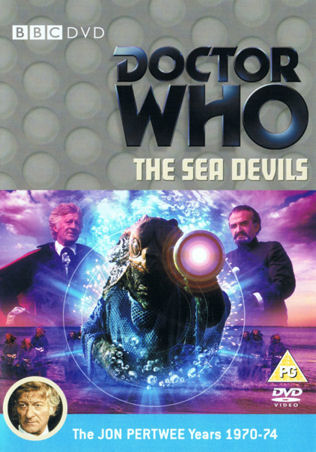When people examine my CV, they are often intrigued by how a graduate specialising in chemistry transferred into web analytics, and into online testing and optimisation. Surely there's nothing in common between the two?
I am at a slight disadvantage - after all, I can't exactly say that I always wanted to go into website analysis when I was younger. No; I was quite happy playing on my home computer, with its 32KB of RAM and 8-bit processor running at 1MHz, and the internet hadn't been invented yet. You needed to buy an external interface just to connect it to a temperature gauge or control an electrical circuit - we certainly weren't talking about the 'internet of things'. But at school, I was good at maths, and particularly good at science which was something I especially enjoyed. I carried on my studies, specialising in maths, chemistry and physics, pursuing them further at university. Along the way, I bought my first PC - a 286 with 640KB memory, then upgraded to a 486SX 25MHz with 2MB RAM, which was enough to support my scientific studies, and enabled me to start accessing the information superhighway.
Nearly twenty years later, I'm now an established web optimization professional, but I still have my interest in science, and in particular chemistry. Earlier this week, I was reading through a chemistry textbook (yes, it's still that level of interest), and found this interesting passage on experimental method. It may not seem immediately relevant, but substitute "online testing" or "online optimisation" for Chemistry, and read on.
I'm sure you can see how the practice and thought processes behind chemical experiments translates into care and planning for online testing. I've been blogging about valid hypotheses and tests for years now - clearly the scientific thinking in me successfully made the journey from the lab to the website. And the comment that the "happy sequence of experiment winners happen less frequently than many would care to admit" is particularly pertinent, and I would have to agree with it (although I wouldn't like to admit it). After all, we're not doing experimental research purely for academic purposes - we're trying to make money, and our jobs are to get winners implemented and make money for our companies (while upholding our reputations as subject-matter experts).
The textbook continues...
I am at a slight disadvantage - after all, I can't exactly say that I always wanted to go into website analysis when I was younger. No; I was quite happy playing on my home computer, with its 32KB of RAM and 8-bit processor running at 1MHz, and the internet hadn't been invented yet. You needed to buy an external interface just to connect it to a temperature gauge or control an electrical circuit - we certainly weren't talking about the 'internet of things'. But at school, I was good at maths, and particularly good at science which was something I especially enjoyed. I carried on my studies, specialising in maths, chemistry and physics, pursuing them further at university. Along the way, I bought my first PC - a 286 with 640KB memory, then upgraded to a 486SX 25MHz with 2MB RAM, which was enough to support my scientific studies, and enabled me to start accessing the information superhighway.
Nearly twenty years later, I'm now an established web optimization professional, but I still have my interest in science, and in particular chemistry. Earlier this week, I was reading through a chemistry textbook (yes, it's still that level of interest), and found this interesting passage on experimental method. It may not seem immediately relevant, but substitute "online testing" or "online optimisation" for Chemistry, and read on.
Despite what some theoreticians would have us believe, chemistry is founded on experimental work. An investigative sequence begins with a hypothesis which is tested by experiment and, on the basis of the observed results, is ratified, modified or discarded. At every stage of this process, the accurate and unbiased recording of results is crucial to success. However, whilst it is true that such rational analysis can lead the scientist towards his goal, this happy sequence of events occurs much less frequently than many would care to admit.
I'm sure you can see how the practice and thought processes behind chemical experiments translates into care and planning for online testing. I've been blogging about valid hypotheses and tests for years now - clearly the scientific thinking in me successfully made the journey from the lab to the website. And the comment that the "happy sequence of experiment winners happen less frequently than many would care to admit" is particularly pertinent, and I would have to agree with it (although I wouldn't like to admit it). After all, we're not doing experimental research purely for academic purposes - we're trying to make money, and our jobs are to get winners implemented and make money for our companies (while upholding our reputations as subject-matter experts).
The textbook continues...
Having made the all important experimental observations, transmitting this information clearly to other workers in the field is of equal importance. The record of your observations must be made in such a manner that others as well as yourself can repeat the work at a later stage. Omission of a small detail, such as the degree of purity of a particular reagent, can often render a procedure irreproducible, invalidating your claims and leaving you exposed to criticism. The scientific community is rightly suspicious of results which can only be obtained in the hands of one particular worker!
The terminology is quite subject-specific here, but with a little translation, you can see how this also applies to online testing. In the scientific world, there's a far greater emphasis on sharing results with peers - in industry, we tend to keep our major winners to ourselves, unless we're writing case studies (and ask yourself why do we read case studies anyway?) or presenting at conferences. But when we do write or publish our results, it's important that we do explain exactly how we achieved that massive 197% lift in conversion - otherwise we'll end up "invalidating our claims and leaving us exposed to criticism. The scientific community [and the online community even moreso] is rightly suspicious of results which can only be obtained in the hands of one particular worker!" Isn't that the truth?
Having faced rigorous scrutiny and peer review of my work in a laboratory, I know how to address questions about the performance of my online tests. Working with online traffic is far safer than handling hazardous chemicals, but the effects of publishing spurious or inaccurate results are equally damaging to an online marketer or a laboratory-based chemist. Online and offline scientists alike have to be thoughtful in their experimental practice, rigorous in their analysis and transparent in their methodology and calculations.
Excerpts taken from Experimental Organic Chemistry: Principles and Practice by L M Harwood and C J Moody, published by Blackwell Scientific Publications in 1989 and reprinted in 1990.















